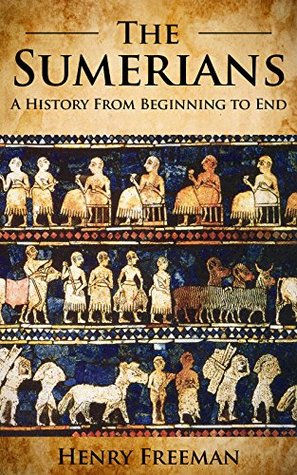More on this book
Community
Kindle Notes & Highlights
They used a base-12 system and a base-60 system rather than a base-10 system. The year was split into 12 segments. They used the base-60 system to divide a circle into 360 degrees.
It’s worth mentioning that a universally accepted chronology for the entire ancient Near East remains to be established. However, several reliable studies of world civilizations suggest that after the end of the last Ice Age in 15,000-10,000 BCE and the first evidence of agriculture, the Sumerians arrived in Mesopotamia circa 5000 BCE.
Significant excavations have taken place in some of the main city-states of ancient Sumer as far back as 1616, when the first brick was brought back to Europe showing the iconic Sumerian system of writing, cuneiform.
Although Nineveh was not a Sumerian city-state, it was however an ancient Akkadian city-state and the capital of the Assyrian Empire at its height.
According to “History in Black: African Americans in Search of An Ancient Past” by Yaacov Shavit, experts are ready to consider the possibility that the early population of Asia was black-skinned. Is that what the Sumerians meant by Sag-giga?
The Sumerian societal contributions of initiating attempts at becoming literate with some of the earliest known dictionaries in the world made them extremely important in studies focused on the origins of literacy. It is considered an indication of the initial civilizing process. Since they developed writing in the middle of the fourth millennium BCE and learned how to make tools and weapons before 3000 BCE, all of the subsequent and corresponding “firsts” continue to fascinate us and feed our curiosity and sense of wonder about the human experience. Their interest and commitment to becoming
...more
Many cuneiform tablets that have been studied relate to tuning and playing instruments and include scales. Their musical system was exported at least as far away as the Mediterranean coast and it is likely that ancient Greeks learned Mesopotamian music theory and math in the Near East. The octave was known, based on analysis of the instruments.
The list explains that kingship was considered a divine institution and talks about the great floods, like the Bible does during the times of Noah. It lists the kings who reigned before the flood and excites researchers, given the window it opens into the past.
The most famous Sumerian king is undoubtedly Gilgamesh. The “Epic of Gilgamesh” is one of the world’s oldest surviving pieces of literature.
In his book, “History Begins at Sumer,” Kramer also credited the Sumerians with the “The First Noah,” “The First Moses,” and “The First Tale of Resurrection,” among other biblically related firsts. There are several historians and Sumerologists who have speculated about significant parallels.
The Sumerians had the word Eden in their language and scholars have suggested that it may have been adopted from the Ubaidians.
Cuneiform is the world’s first system of writing, and as the use of cuneiform grew, writing began to be used for academic purposes rather than just for economic and administrative necessities.
The Sumerians accomplished a series of firsts. They were the first to make the mathematical calculations to predict the future position of certain planets. They were the first to calculate that the square of the hypotenuse of a right triangle is equal to the sum of the squares of its other two sides.
There is evidence from between 2500-3000 BCE of multiplication and division tables, tables of squares, square roots and cube roots, geometrical exercises, and a complex system of measurements. There is evidence of many financial obligations written on tablets that are expressly seen as loan contracts.
In terms of advancements in astronomy, the Sumerians made star catalogues and used a 12-month solar calendar along with a 354-day lunar calendar. By the 3 rd millennium BCE, they regularly used a 360-day calendar.
Evidence found in the underground library of King Ashurbanipal in Nineveh has puzzled experts, since it may indicate that the Sumerians observed the impact of an asteroid over 5,000 years ago.
As the inventors of writing, Sumerians started to represent the world around them - and that’s something our human ancestors would appreciate that we still do today. Despite the language barriers and thousands of years, humans still rely on each other.


